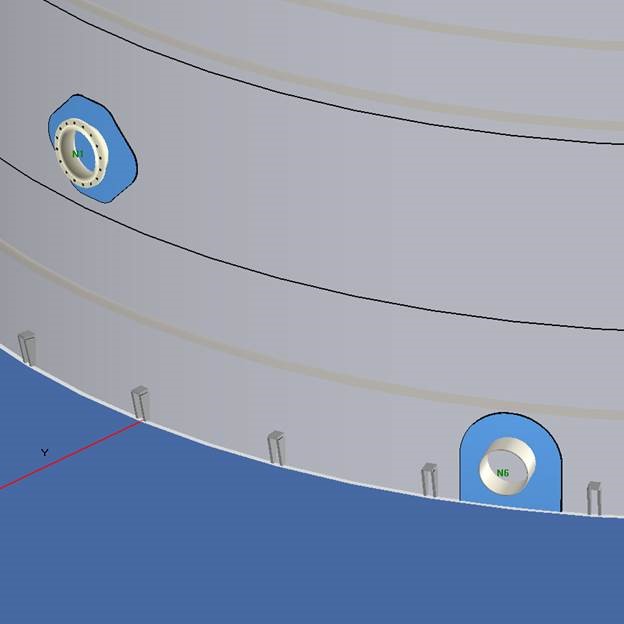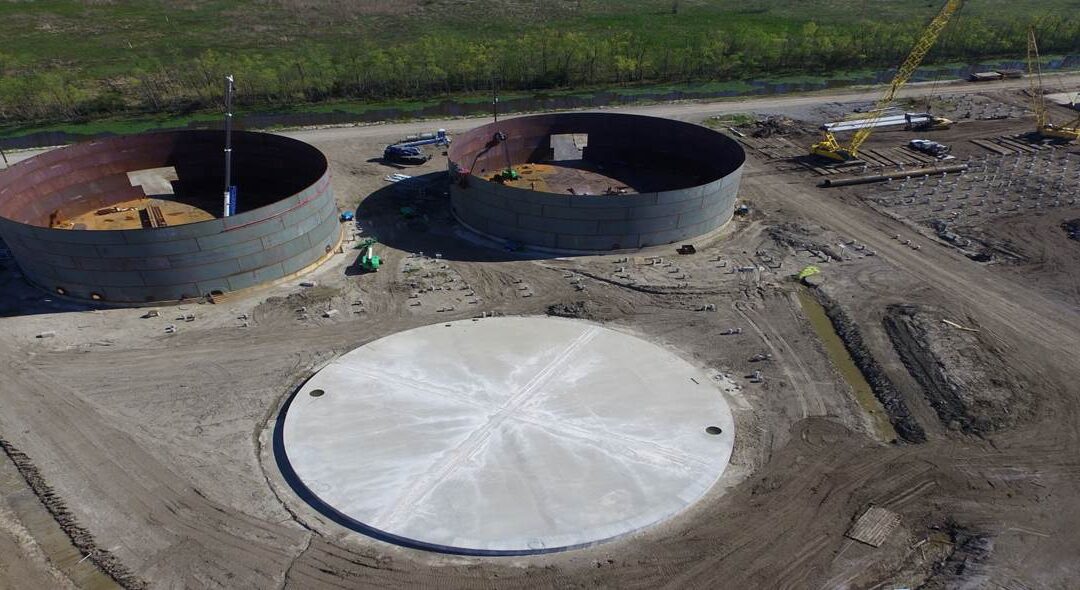Ensuring Compliance Through API 650 Welding Inspection Best Practices
Wiki Article
A Step-by-Step Consider the Installment Refine of Welding Examination Techniques
Welding inspection is a vital process that assures architectural integrity and safety and security. The installation of assessment methods entails several systematic actions, each essential to accomplishing trustworthy outcomes. From planning and device selection to conducting visual and non-destructive examinations, each stage needs careful focus. Comprehending these treatments can substantially enhance quality control in welding jobs. What challenges develop in applying these strategies, and exactly how can they be efficiently addressed?Understanding the Significance of Welding Examination
Welding evaluation is a critical part of making certain architectural honesty and safety in building and manufacturing procedures. This method involves evaluating welded joints for problems, making certain that they meet particular standards and regulations. By methodically assessing weld quality, inspectors can identify concerns such as splits, voids, and insufficient blend, which can endanger the strength and resilience of frameworks.The importance of welding examination prolongs beyond prompt safety and security problems; it helps stop expensive failures and potential dangers in the long term. Effective inspection techniques foster compliance with industry criteria, thus enhancing the overall reliability of bonded parts. Furthermore, a durable examination process adds to preserving the online reputation of contractors and makers, as it ensures customers of the quality of their tasks. Ultimately, understanding the importance of welding inspection is important for promoting safe building and construction practices and making sure the durability of essential framework and items.
Selecting the Right Equipment for Assessment
When selecting the ideal devices for assessment, it is necessary to contemplate the details demands of the welding procedure and the products included. Different assessment techniques, such as visual, ultrasonic, and radiographic testing, demand distinct devices customized to their unique needs. For visual assessments, tools like magnifying glasses and calipers are vital for assessing weld quality. Ultrasonic testing needs customized equipment efficient in transmitting and receiving acoustic waves to identify inner flaws. Radiographic screening, on the various other hand, uses X-ray or gamma-ray sources together with sensitive film or electronic detectors to expose disparities.
In addition, personal protective tools (PPE) is necessary to ensure the security of assessors throughout assessments. Choosing the right devices not only enhances the precision of evaluations however likewise adds to the general honesty and safety of the welding task. An extensive understanding of available devices and their applications is important for efficient welding inspection.
Preparing for the Inspection Process
Before launching the inspection process, it is important to establish a detailed plan that details the scope and goals of the analysis. This strategy must consist of details requirements that specify what comprises appropriate quality in the welding work being examined. Determining the appropriate codes and criteria is crucial, as they will certainly assist the examination standards and techniques.Additionally, personnel associated with the examination should be appropriately trained and licensed in welding inspection techniques to ensure reliability and accuracy. A checklist can be advantageous in arranging the numerous aspects of the assessment, varying from equipment readiness to ecological conditions that might influence the assessment.

Logistical considerations such as scheduling, available sources, and interaction in between group members should be addressed. By preparing systematically, assessors can enhance the efficiency of the analysis and make sure that all crucial variables are appropriately considered prior to waging the evaluation itself.
Conducting Aesthetic Evaluations

Performing visual inspections is a crucial action in the welding inspection procedure, calling for careful prep work to guarantee reliable analysis. Inspectors must be familiar with crucial problem signs that can signal possible issues in weld quality. By concentrating on these elements, one can enhance the total reliability of the assessment outcomes.
Planning For Visual Inspection
Aesthetic examination offers as an important primary step in the welding examination procedure, guaranteeing that any kind of possible issues are recognized early (API 650 Welding Inspection). Proper prep work is vital for effective aesthetic examination. Inspectors need to start by evaluating relevant documentation, consisting of welding procedures and specifications, to recognize the project demands. They should gather necessary devices, such as amplifying glasses, flashlights, and appropriate personal safety devices (PPE) A complete assessment of the inspection area is vital; examiners need to confirm it is totally free and tidy of obstructions. In addition, it is very important to establish perfect lighting conditions to improve visibility of welds. By taking these preparatory steps, examiners can produce an atmosphere for determining discrepancies and ensuring the stability of the welded structuresTrick Problem Indicators
A thorough understanding of crucial problem indicators is vital during aesthetic examinations to assure the quality and security of bonded joints. Examiners need to concentrate on certain signs such as fractures, porosity, damages, and incomplete fusion. Cracks might show up as sharp lines and can compromise architectural stability. Porosity manifests as tiny openings that can damage weld toughness. Undercuts, which are grooves along the weld edge, can lead to stress focus. Incomplete fusion shows that the weld steel did not appropriately bond with the base material, causing a weak joint. By systematically determining these defects, assessors can determine compliance with sector criteria and boost the overall integrity of welded structures, ultimately adding to much safer functional conditions.Implementing Non-Destructive Testing Strategies
 her explanation
her explanation Various non-destructive screening (NDT) methods are indispensable to guaranteeing the integrity of bonded structures without endangering their performance. These techniques allow examiners to review weld high quality and detect flaws without causing damages to the products being checked. Typical NDT strategies include ultrasonic screening, radiographic testing, magnetic bit screening, and color penetrant testing. Each approach serves a certain objective, dealing with different kinds of flaws such as fractures, porosity, or insufficient blend.
Executing NDT methods calls for an organized strategy, starting with selecting the ideal method based on the materials and the nature of the weld. Educating workers in these methods is vital for accurate results. Furthermore, establishing clear procedures and criteria warranties consistency throughout the evaluation process. By incorporating NDT right into the welding evaluation process, companies can boost the reliability of their items while Visit This Link decreasing possible risks linked with structural failings. This proactive approach eventually contributes to preserving safety and security and quality standards in bonded building and constructions.
Evaluating and recording Examination Results
Effective documents and evaluation of evaluation outcomes are essential parts of the welding assessment procedure. Accurate documents of evaluation searchings for act as a referral for quality control and conformity with market standards. API 650 Welding Inspection. Inspectors ought to use structured forms or digital systems to log details such as the kind of weld, inspection techniques used, and any discrepancies determined during the analysisThorough evaluation is crucial as soon as data is collected. This includes contrasting outcomes versus developed criteria to recognize fads or recurring concerns. Statistical tools might be employed to measure defects and analyze their influence on general weld top quality.
Reliable interaction of searchings for to relevant stakeholders is vital. Recaps and reports need to be clear and succinct, highlighting essential insights and referrals for corrective activities. By systematically analyzing and documenting inspection outcomes, companies can promote constant improvement in welding methods and enhance item honesty.
Often Asked Questions
What Qualifications Are Required to End Up Being a Welding Examiner?
To end up being a welding examiner, one commonly requires relevant accreditations such as AWS CWI, together with experience in welding methods, knowledge of Your Domain Name welding codes, and effectiveness in inspection methods to ensure high quality and safety criteria.Exactly How Frequently Should Welding Inspections Be Conducted?
Welding evaluations ought to be performed consistently, generally after each weld is completed, and occasionally during projects. Aspects such as project intricacy, sector criteria, and regulative needs can influence the frequency of these evaluations.What Is the Cost of Welding Examination Services?
The cost of welding inspection services varies considerably based on variables such as task dimension, complexity, and location. Normally, rates range from $100 to $150 per hour, with additional costs for specialized testing and certifications.Are There Certifications for Welding Inspectors?
Yes, there are numerous qualifications for welding examiners, consisting of those supplied by the American Welding Society (AWS) and the International Institute of Welding (IIW) These certifications guarantee examiners have the required skills and knowledge for efficient evaluations.
How Do I Pick an Evaluation Service Service Provider?
To choose an assessment company, one must review credentials, experience, industry track record, and consumer testimonials. Additionally, contrasting solution offerings and rates can assist guarantee the selected supplier satisfies details task needs properly.Additionally, employees included in the evaluation has to be adequately educated and accredited in welding inspection strategies to ensure dependability and precision. Conducting visual evaluations is a crucial action in the welding examination procedure, needing mindful preparation to ensure reliable examination. Aesthetic examination offers as an essential first action in the welding assessment process, guaranteeing that any kind of possible defects are recognized early. Effective documentation and analysis of assessment outcomes are necessary elements of the welding examination process. Welding evaluations need to be performed consistently, typically after each weld is completed, and regularly throughout projects.
Report this wiki page